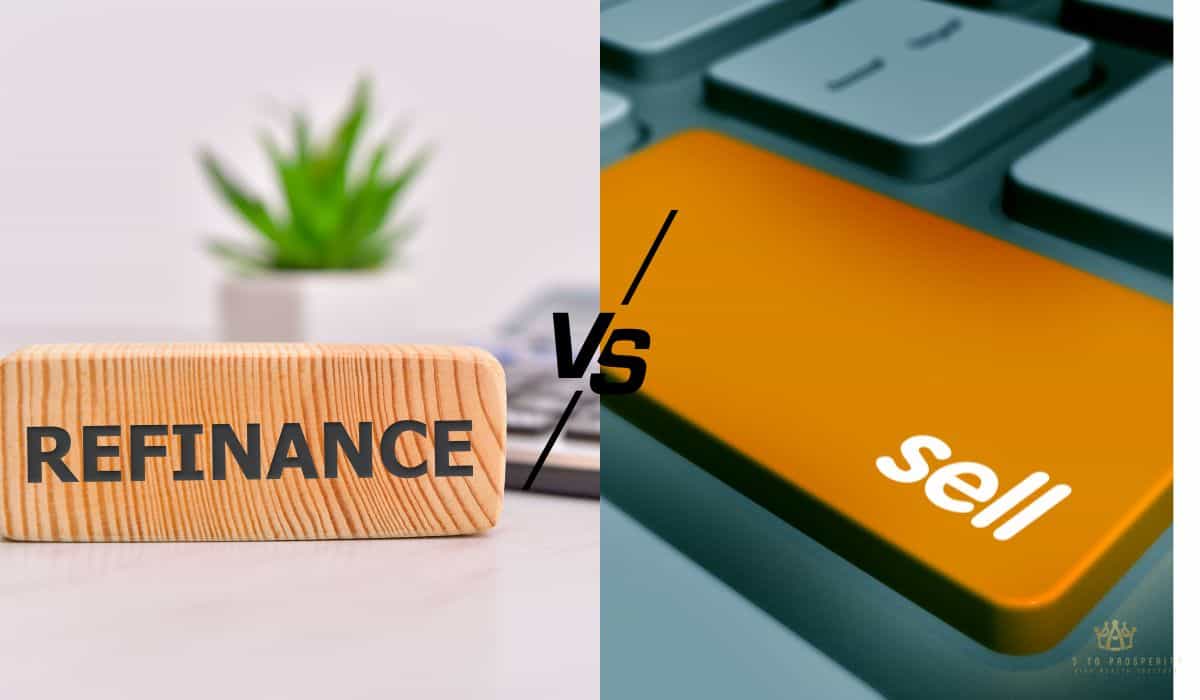
Over a hundred million.
That’s how many American households can’t afford a new home in 2025. With median prices hitting almost $460,000 in 2025, 75% of households in the US today find themselves shut out completely.
This translates to about 100.6 million families. That’s brutal.
However, from our experience, this pricing crisis doesn’t mean you should abandon your dreams of building wealth through real estate. Learning how to invest in property with little money is absolutely possible with the right approach.
Learning how to invest in property with little money is absolutely possible with the right approach. To explore individual funding options to begin your real estate portfolio, here are a few of our insights: funding guide.
This guide breaks down five practical, proven strategies that actual everyday people use to enter the market without massive savings accounts.
You’ll discover specific techniques to acquire investment property, generate passive income, and build equity, all starting with minimal capital.
Our previous article on group real estate investment showed how pooling resources creates opportunities. This guide expands those concepts while connecting to our broader commercial real estate investment structures resource.
The strategies here work for beginners and experienced investors alike.
Short Summary
Over 100 million U.S. households are priced out of buying a new home in 2025, making creative real estate investing more important than ever.
House hacking lets you live in one unit and rent out the others, often using low-down-payment loans like FHA.
Creative financing options like seller financing, partnerships, and leveraging home equity can help you buy property without a large upfront investment.
REITs offer passive income opportunities with minimal capital—some start as low as $10.
Real estate crowdfunding platforms allow small investors to join larger deals with clear protections and lower minimums.
Fixer-uppers and distressed properties can be solid investments when paired with renovation loans and a clear plan.
1. House Hacking: The Ultimate Strategy For How To Invest In Property With Little Money
Let’s talk about house hacking: a powerful way to jumpstart your real estate investing journey with minimal cash upfront. It’s one of the easiest ways to live affordably while becoming a property owner and building long-term equity.
Here’s how it works, why it’s popular, and how to do it right.
What Is House Hacking And Why It Works
House hacking means living in one unit of a multi-family property, like a duplex, triplex, or fourplex, and renting out the other units.
Because you’re living in the home, you qualify for owner occupied properties financing options like FHA loans, which require as little as a 3.5% down payment. That’s a game-changer if you’re figuring out how to invest in property with little money.
Rental Income Can Cover Your Mortgage (And Then Some)
When those other units bring in rental income, it offsets your mortgage payments. Sometimes, it even covers them entirely.
For instance, imagine buying a $400,000 triplex. With an FHA loan, your upfront costs might be around $14,000, including closing costs. Monthly mortgage and taxes might come to $2,500.
Now, let’s say the other two units each rent for $1,200. You’re bringing in $2,400 a month, meaning you’re living in your primary residence for almost free while building wealth.
In these setups, investors walk away with a few hundred bucks in cash flow each month, just from house hacking.

Real Tax Perks, And A Few Landlord Lessons
There are tax benefits, too. You can write off mortgage interest, repairs, depreciation, and a portion of utilities. One case we saw involved a homeowner reducing their annual tax bill by over $3,000 through tax planning on their rental properties.
Being both landlord and neighbor has its quirks, though. One example: a tenant knocking on the door at midnight over a leaky faucet. It’s manageable, but it helps to set clear expectations up front. Screening tenants carefully and understanding local rental laws are key steps.
All in all, house hacking remains one of the best entry points for becoming a real estate investor without needing a mountain of cash.
2. Creative Financing Options For Your First Rental Property
Getting into your first rental property doesn’t always mean saving up 20% and hoping the bank says yes. Plenty of new investors have found success using alternative strategies that don’t rely on traditional lenders. Let’s break down a few of the most accessible ones.
Seller Financing And Private Lending Can Open Doors
Traditional loans can be tough if your credit score isn’t perfect or your savings account is running low. That’s where seller financing or private lending might come in handy.
- Seller financing means the seller becomes the bank. Instead of borrowing from a lender, you agree on monthly payments directly with the seller, usually with a small down payment and flexible terms.
- Private lending involves borrowing from individuals, like a family friend, mentor, or someone in your network, rather than a financial institution. These deals are usually based more on trust and your plan than your credit report.
One example: a couple negotiated seller financing on a $250,000 duplex with just $10,000 down. The seller preferred steady monthly income and didn’t want to deal with listing the property. That’s a win-win!

Partnering Up Makes Entry Easier
If funds are tight, partnering with someone, like a sibling or trusted friend, can make your first investment possible.
- Pooling funds helps cover the down payment.
- You can split responsibilities: one manages the property, the other handles finances.
- Some go with a co-borrower arrangement to boost their borrowing power for a mortgage.
We’ve seen friends combine efforts where one brought equity and the other handled the renovation work. They both benefited from appreciation and rental income without carrying the full burden alone.
Tapping Into Home Equity
Already own a home? You might use a home equity line of credit (HELOC) or a cash-out refinance to access capital for your investment.
- A HELOC lets you borrow against your existing home’s value and only pay interest on what you use.
- Cash-out refinancing replaces your current mortgage with a bigger one and gives you the difference in cash.
This works well if you’ve built up enough equity, say, $75,000 or more, and want to avoid taking on personal loans or draining savings.
Strengthening Your Financial Foundation
If you’re not quite ready, that’s okay. Here are a few steps to get there:
- Boost your credit score by paying off debt and making timely payments.
- Build a strong savings habit, even a few hundred dollars a month adds up.
- Track your debt-to-income ratio. Most lenders want it under 43%.
Creative financing doesn’t mean risky. It just means thinking outside the bank. With a little planning and teamwork, your first rental property could be closer than you think.
3. Real Estate Investment Trusts (REIts) For Passive Income
Not everyone wants to be a landlord, and that’s where REITs can shine. If you’re after passive income without tenant calls or fixing leaky toilets, investing in Real Estate Investment Trusts might be the move.
What Are REITs And Why Do They Matter?
A REIT is a company that owns or finances income-producing commercial real estate, like apartments, office buildings, or shopping centers.
- You can start investing in REITs with as little as $10, depending on the platform or brokerage.
- Unlike buying a property, you’re buying shares in a real estate portfolio managed by professionals.
This makes REITs one of the easiest answers to how to invest in property with little money. No need for a big down payment or renovation crew.

How REITs Compare To Mutual Funds
On the surface, REITs look a lot like mutual funds. You’re pooling money with others and investing in assets. But there are a few key differences that make REITs stand out:
- REITs are required to distribute at least 90% of their taxable income to shareholders as dividends.
- That translates to regular cash payments, perfect if you’re focused on income rather than long-term growth.
- They’re also highly liquid; you can buy or sell shares on the stock market without the delays of selling property.
One investor we spoke with bought shares in a public REIT that specialized in industrial warehouses. They were earning quarterly dividends without lifting a finger.
Investing Through Brokerages Is Straightforward
Getting started with REITs is as simple as:
- Opening an online brokerage account.
- Searching for public REITs that match your goals (residential, commercial, healthcare, etc.).
- Buying shares and setting up dividend reinvestment if you want to grow your holdings over time.
REIT earnings are taxed as ordinary income, so it helps to plan with that in mind or keep them in tax-advantaged accounts like a Roth IRA.
No Landlord Duties, Just Income
The biggest perk? No property management headaches. With REITs:
- You don’t deal with vacancies, repairs, or collecting rent.
- You still benefit from exposure to real estate markets.
- You can diversify quickly across different sectors and locations.
REITs are a solid choice for folks who want in on commercial real estate investment structures without going all in on physical property.
4. Real Estate Crowdfunding Platforms For Small Investors
Getting a foot in the door of big real estate deals used to be out of reach for everyday investors. However, real estate crowdfunding changed that. Now, with just a few hundred bucks, small investors can access larger commercial and residential opportunities.
What Is Real Estate Crowdfunding?
Real estate crowdfunding means pooling money with other investors to fund bigger projects. These platforms let you buy into apartment complexes, retail centers, and even new developments without needing to own the whole thing.
- Minimum investments often start around $10 to $500.
- You choose which deals to back based on property type, location, and expected return.
This makes it another great tool for those exploring how to invest in property with little money.
Investor Protections and Regulations
Crowdfunding platforms operate under SEC regulations, offering more transparency than informal investment groups. For example:
- Many platforms are registered as intermediaries and must comply with investor limits and disclosures.
- Some deals are open only to accredited investors, while others allow non-accredited individuals to participate.
This setup helps protect small investors while keeping entry points low.
Platform Comparison: Know Before You Invest
There’s no shortage of platforms out there, so picking the right one depends on your goals. Here’s a quick breakdown:
- Fundrise: $10 minimum, focuses on diversified eREITs and eFunds.
- RealtyMogul: $5,000 minimum, includes residential, commercial, and REIT options.
- CrowdStreet: $25,000 minimum, geared toward accredited investors and larger-scale commercial real estate.
In one example, a part-time investor used Fundrise to build a passive income stream with quarterly dividends, all from a $500 initial deposit.
Set It And Forget It (Mostly)
Once you invest, there’s not much day-to-day involvement. You won’t be chasing tenants or calling contractors.
- Most platforms handle property management, updates, and distributions.
- Returns can range from 5% to 12%, depending on the project and holding period.
- Some deals pay out quarterly, others after the asset sells.
For those seeking a group real estate investment experience without the group meetings, crowdfunding makes passive investing simple and scalable.
5. Finding Value In Fixer-Uppers And Distressed Properties
Some of the best deals out there aren’t shiny or staged. They’re the ones with peeling paint, outdated kitchens, and serious potential. Fixer-uppers and distressed properties can be goldmines for investors who know what to look for, and how to work with what they’ve got.

How To Spot The Right Property
Not every ugly house is a smart buy, though. To spot true value, keep an eye out for:
- Homes priced below market due to cosmetic or minor structural issues
- Properties in improving neighborhoods or near planned developments
- Motivated sellers, often due to probate, foreclosure, or financial strain
It’s important to run numbers before jumping in. For example, one investor identified a $190,000 property needing $35,000 in work. After repairs, it appraised at $280,000. That’s instant equity.
Financing Renovations On A Budget
Many investors succeed using FHA 203(k) loans, which roll purchase and renovation costs into one mortgage. They’re designed for owner-occupants and require just 3.5% down.
Other options include:
- Conventional renovation loans (higher credit needed)
- Hard money loans for faster closings
- Local grant or loan programs for first-time homebuyers
All of these allow you to learn how to invest in property with little money while gaining hands-on experience.
Sweat Equity = Real Value
Instead of cash, time and effort can boost your return. Sanding floors, painting, and even managing subcontractors can reduce costs significantly.
For example, one buyer shaved $12,000 off their rehab budget by handling demo and paint themselves.
Every hour you put in builds sweat equity, which is a direct path to forced appreciation.
Should You Tackle A Fixer?
Not every project fits every investor. Ask yourself:
- Do I have the time to manage renovations?
- Can I live in the property while it’s being fixed?
- Do I have a support system—contractors, inspectors, etc.?
If the answer’s yes, a fixer-upper might be the smartest path to long-term wealth through real estate. From our experience, it’s often the gateway for first-time investors to start building serious equity.
Final Thoughts
Getting started in real estate doesn’t have to mean having deep pockets or perfect credit. There are practical, creative ways to build wealth slowly, even with limited funds.
From house hacking to real estate crowdfunding, each strategy comes with trade-offs, but also real opportunities. The key is to choose the path that fits your goals, skills, and budget. Start small, stay curious, and take action when the numbers make sense. Want more tips or ready to explore your next step? Head over to our homepage for tools, insights, and fresh ideas to help you grow your real estate journey.
Frequently Asked Questions
What’s The Easiest Way To Start Investing In Real Estate With Little Money?
A common first step is house hacking: buying a small multi-unit property, living in one unit, and renting out the rest. This works well with FHA loans that require as little as 3.5% down.
Can I Invest In Real Estate If My Credit Isn’t Great?
It’s possible, but you may need a co-borrower, partner, or consider private lending and seller financing. Working to improve your credit first can open more doors and better rates.
Are Reits A Good Option For Beginners?
Yes. REITs are easy to access through most brokerages, don’t require property management, and provide steady dividend income. They’re ideal if you want exposure to real estate without owning physical property.
What Kind Of Return Should I Expect From Real Estate Crowdfunding?
Returns vary depending on the deal, platform, and investment term. Many platforms offer 6–12% annual returns, but it’s important to read the fine print and understand the risks before investing.






